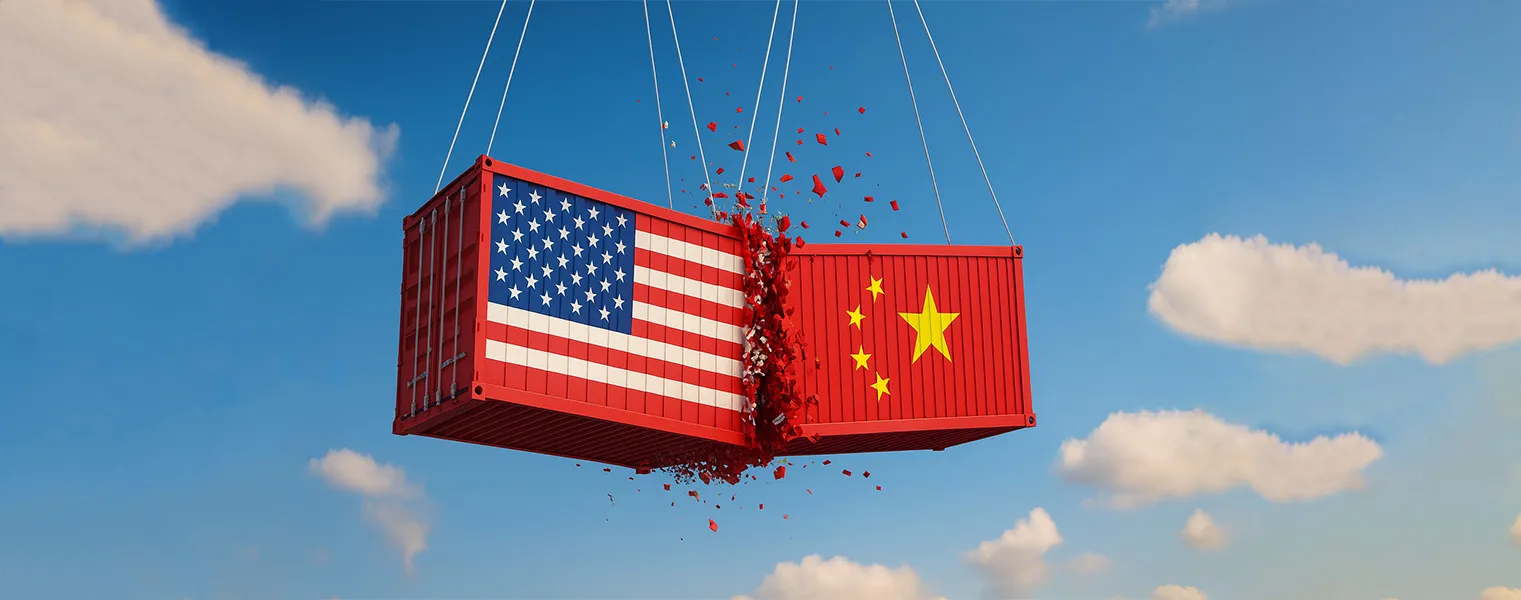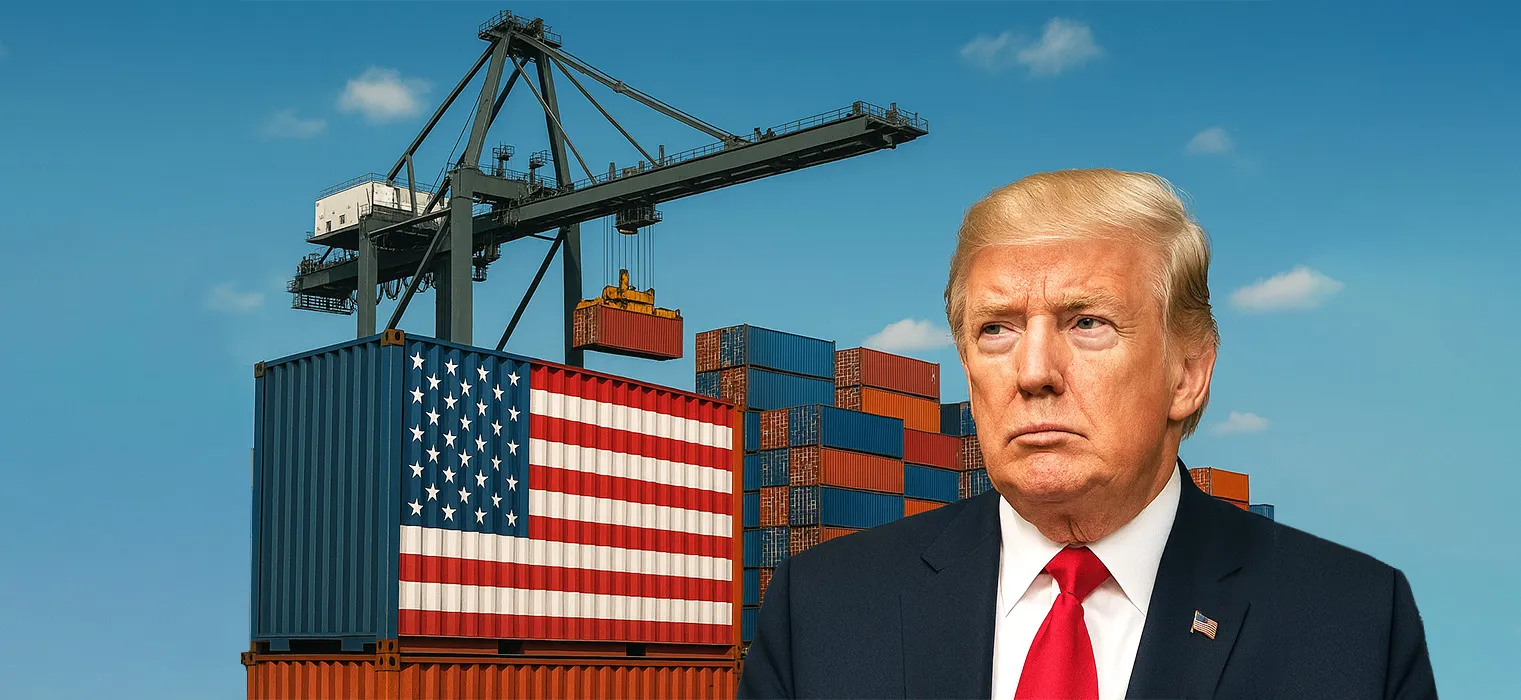Trump’s Sweeping 2025 Tariffs: All You Need to Know About USA Latest Tariffs & What They Mean for Global Trade, Prices, and Agriculture
On April 2, 2025, President Donald J. Trump stunned the world by proclaiming “Liberation Day”, unleashing a comprehensive overhaul of U.S. import tariffs. Invoking national emergency powers under the International Emergency Economic Powers Act (IEEPA), he simultaneously imposed a 10% universal tariff on practically all imports and elevated “reciprocal” duties on roughly 60 “worst offending” countries. These measures arrive on the heels of earlier tariffs targeting steel, aluminum, autos, and certain agricultural goods.
While Trump asserts these steps will rebuild domestic manufacturing and narrow the trade deficit, economists, farmers, shipping companies, and major retailers foresee higher prices, supply chain upheavals, and an intensified risk of global recession. Below is a comprehensive, analysis covering the latest news, global status, industries and products affected, price effects now and in the future, shipping disruptions, market signals, and a special focus on agricultural and food products impacted by these tariffs. Finally, we’ll wrap up with additional details not yet covered.
1. Latest Updates & News: “Liberation Day” in 2025
A. National Emergency & Tariff Breakdown
- April 2, 2025: President Trump declared a national emergency over ballooning trade deficits and alleged unfair trade practices.
- A 10% universal tariff took effect on all countries—the biggest shift in U.S. tariff policy since the 1930 Smoot-Hawley Act.
- Reciprocal tariffs also target specific nations with higher rates. For example:
- EU: +20% on top of the 10% baseline, total 30%.
- China: +34% on top of the 10% baseline, total 44%.
- Vietnam: +46%, Bangladesh: +37%, Lesotho: +50%, etc.
- Some items like pharmaceuticals, semiconductors, critical minerals, and certain USMCA-compliant goods from Canada/Mexico remain exempt… for now.
B. Layering on Existing Tariffs
This announcement builds on prior duties:
- Steel & Aluminum: 25% from earlier Section 232 orders.
- Autos & Auto Parts: Already 25%, now possibly an additional 10%.
- Energy from Canada: 10% rate.
Thus, some products now face stacked tariffs reaching 35% or higher.

C. Trade War Tensions Escalate
- China swiftly condemned the new “reciprocal” duties, threatening more retaliation on U.S. agriculture.
- EU leaders have indicated readiness to respond but haven’t finalized new measures beyond existing steel/aluminum counter-tariffs.
- Canada & Mexico remain partially exempt under separate fentanyl/migration IEEPA orders from earlier in 2025, but face their original 25% duties if goods fail USMCA compliance.
D. Implementation Timeline
- Feb 1, 2025: Executive orders imposing a 25% tariff on Canada & Mexico (10% on Canadian energy) + 10% on China. Planned start date Feb 4.
- Feb 3, 2025: The White House paused the tariffs on Canada & Mexico for one month, pushing them to March 4, 2025, after each promised tighter border controls.
- Feb 4, 2025: The 10% tariff on Chinese imports took effect.
- March 4, 2025: The 25% tariffs on Canada & Mexico were finally enforced.
- April 2, 2025: Trump’s major “Liberation Day” announcement layered 10% universal tariffs on all countries plus elevated, individualized “reciprocal” tariffs on 60 partners with large trade deficits. Some goods—such as pharmaceuticals, semiconductors, or certain minerals—are exempted for now.
C. Where We Stand Now
- Countries like China have already responded with or threatened retaliatory tariffs on U.S. agricultural products, nuts, and consumer items.
- The EU is also studying punitive measures but has not finalized any new set of tariffs beyond existing steel and aluminum counter-duties.
- Canada and Mexico maintain separate partial tariffs from the earlier “fentanyl & migration IEEPA” orders, with possible expansions if they see no progress in negotiations.
2. Global Status: Countries & Industries Affected
A. Countries in Focus
- China – Already had 10% from February; now an additional 34%.
- EU – 10% universal + 20% reciprocal = 30%.
- Vietnam – 10% + 46% = 56% total, among the highest, reflecting big trade deficits.
- India – 10% + 26% = 36%.
- Bangladesh – 10% + 37% = 47%.
- Lesotho – 10% + 50% = 60%, the highest reciprocal tariff.
- Mexico & Canada – Exempt from the latest “Liberation Day” universal measure but still face older 25% for non-USMCA goods.

B. Industry Sectors Hardest Hit
- Retail & Apparel: Clothing from Bangladesh, Vietnam, and China face 40–50% combined duties, likely raising U.S. shelf prices.
- Electronics: iPhones (China assembly), gaming consoles, laptops from Asia. Tariffs push up costs for major importers like Best Buy, Amazon, or Walmart.
- Automotive:
- Import cars & parts from EU, Japan, or S. Korea face 25% existing + 10% universal = 35%.
- US-based automakers reliant on foreign components also see cost surges.
- Agriculture & Food:
- Wine/cheese from EU,
- Produce from Mexico,
- Seafood from Vietnam,
- Coffee from Brazil and
- Chocolate/cocoa from West Africa all see tariff increases.
- Metals/Plastics: Overlaps with existing Section 232 steel & aluminum tariffs.
C. Short-Term vs. Long-Term Global Reaction
- Short-Term:
- Importers rush shipments before deadlines → port congestion + surging freight rates.
- Companies front-load stock to avoid new duties.
- Long-Term:
- Supply chains might relocate to “tariff-friendly” nations or nearshore to the U.S.
- Potentially reduced global trade volumes, with risk of broader economic slowdown or global recession.
D. Countries Under Higher Tariffs
- China: Already faced a 10% from Feb 4. Now layered with a 34% “reciprocal” tariff, so total duties can top 44%. Key products: electronics, textiles, shoes, auto parts.
- EU: Set to face a baseline 10% plus 20% reciprocal tariff, so 30% total. Covers wide range—cars, wine, cheese, other agricultural items.
- Mexico & Canada: Already under 25% for non-USMCA-compliant goods, with 10% on potash & Canadian energy. Freed from some new “Liberation Day” measures, but their prior 25% remain active.
- India: Additional 26% reciprocal tariff. Big blow for apparel, footwear, generic drugs.
- Vietnam: Slapped with a 46% reciprocal tariff, among the highest after Chinese & EU rates, reflecting rising trade deficits.
- Bangladesh: 37% reciprocal tariff on garments, footwear, especially hitting its strong clothing sector.
- Lesotho: 50% tariff – the highest reciprocal measure.
E. Key Products Under Tariff Pressures
- Electronics: iPhones, TVs, laptops from China, Vietnam, etc.
- Auto & Auto Parts: All non-USMCA imports face 25% + universal 10% = 35%.
- Clothing & Footwear: Sourced heavily from China, Vietnam, Bangladesh.
- Agriculture & Food:
- Fruits & Vegetables: From Mexico, EU, or Asia
- Wine & Spirits: France, Italy, UK
- Cheese & Dairy: From EU
- Coffee, Cocoa, Sugar: Latin America, Ivory Coast, etc.
- Metals: Overlaps with earlier steel & aluminum tariffs.
- Oil & Gas: Canadian energy faces only 10%, while other global producers face 10% + reciprocal amounts if they are “worst offenders.”

3. Prices: Immediate & Future Implications
A. Immediate Price Surge
- Electronics: Possibly +10–25% at retail.
- Auto: Gains of $2,000 or more on imported vehicles or partially foreign-sourced American models.
- Clothes/Shoes: +10–30% for apparel from Asia.
- Food Items: Coffee (Brazil +10%), chocolate (Ivory Coast +21%), cheese & wine (France, Italy +20%), plus produce from Mexico with 25%.
B. Inflation & Consumer Impact
- U.S.: Households already coping with high inflation may see further hits to groceries, clothing, electronics.
- EU: American goods face 20–30% if shipping non-exempt items to the U.S., thus raising concerns for transatlantic shipments.
- China: Exports battered by 44% total duties, possibly pushing up U.S. consumer electronics costs or prompting alternative sourcing in Vietnam or India.
C. Possible Price Stabilizers
- Some big brands with large profit margins (Apple, Nike) might absorb part of the new duties to preserve market share.
- If the economy softens, lower consumer demand could moderate inflation—but also hamper business growth.

4. Shipping & Supply Chain Disruption
A. Freight Forwarding & Port Chaos
- Import Rush: Companies accelerate shipments, clogging ports. Then a lull may follow.
- Container Lines: Demand whipsaws, with uncertain shipping schedules. Carriers from Asia brace for volume drops if tariffs remain long-term.
- E-commerce: Tools like Shein or Temu face end of de minimis (duty-free threshold) from China, complicating last-mile shipments.
B. Costs & Routes
- Carriers might re-route or handle shipments in smaller lots to manage risk.
- Freight rates on major routes (China → US West Coast) remain volatile; some soared to 16% daily gains pre-tariff but then sank after the rush.
- Additional Trump plans to levy port call fees on China-linked vessels is in discussion, threatening further chaos.

5. Market Analysis & Signals
1- Tariffs as a Negotiation Lever
Trump says these are “reciprocal” measures forcing foreign partners to lower tariffs on U.S. goods. Historically, threatened tariffs have sometimes compelled partial concessions but also risk trade wars.
2- Subsidies or Farmer Aid
The White House is rumored to propose emergency support for farmers hit by foreign retaliation. In 2018’s first term trade disputes, billions in farm assistance offset tariff damage. That scenario might replay now.
3- Corporate Reactions
- Absorb vs. Pass On: Some luxury goods or leading brands can maintain price points or accept margin hits. Commodity-like goods typically pass cost along to consumers.
- Front-Loading: Many importers accelerate shipments to evade new tariffs. This front-loading mania results in near-term import surges then subsequent lulls.
4- Global Recession Fears
Growing concerns that “nuclear-level” tariffs reminiscent of 1930’s Smoot-Hawley could hamper the entire global system, fueling inflation and damaging supply chain fluidity.
6. Impact on Agricultural & Food Products
One of the biggest concerns is how Trump’s 2025 tariffs impact agricultural and food imports:
- Grains & Wheat
- Tariffs: Wheat from the EU (France, Germany) or from Russia (though Russia is not a major direct U.S. supplier) face 10% universal + additional for “worst offenders.”
- Price Impact: U.S. could see minor grocery shelf price hikes for wheat-based products or specialty flours.
- Global Reaction: The USDA worried about falling wheat exports if foreign nations retaliate.
- Fruits & Vegetables
- Mexico is a top supplier of fresh produce, particularly tomatoes, avocados, and berries. Now subject to a 25% tariff if goods aren’t USMCA-compliant.
- Expect near-term price increases in supermarkets for produce from Mexico. Seasonal shifts might see importers scrounge for alternative sources or push more greenhouse production in the U.S. or Canada.
- Meat & Poultry
- US hog, beef, poultry producers fear retaliatory duties abroad, especially in big markets like China, Mexico, and Japan.
- Conversely, U.S. importers of certain specialized meat from EU or Asia face the universal 10% tariff plus region-specific rates (the EU sees 20% reciprocal, so 30% total).
- Result: Price hikes on specialized or gourmet meats from Europe or Asia, possibly shifting consumer preference to local or South American alternatives.
- Seafood
- Seafood from Vietnam or Canada could be subject to higher duties (Canada 25% if non-USMCA complaint, Vietnam 46%).
- Retail prices for certain shrimp or fish might jump accordingly.
- Coffee & Cocoa
- Latin American producers like Brazil, Colombia face 10% universal plus additional 10–20% (depending on “worst offender” status).
- Ivory Coast and Ghana face new reciprocal tariffs (21% or more).
- Coffee and chocolate prices in the U.S. likely to climb.
- Nuts & Produce
- Almonds, walnuts, pistachios from outside the U.S. face new duties. But the larger story is foreign retaliation on U.S. nuts (California) overseas.
- The swirling duties can hamper global orchard expansions and push certain markets (like China) to alternative suppliers.
- Dairy & Cheese
- The EU, major cheese exporter, sees 10% + 20% = 30% total. Imported cheeses like brie, gouda, and specialty items become pricier.
- New Zealand or Australian dairy might see lesser reciprocal surcharges but still 10% universal.
Export & Pricing Effects: Key Reasons Behind
- High Tariffs on Key Ag Imports: Many big suppliers to the U.S. are slapped with 20–40% effective rates, raising immediate cost.
- Foreign Retaliation: Countries reliant on U.S. markets for cereals, soybeans, or meat will impose reciprocal measures, reducing U.S. farm exports and possibly depressing domestic prices for U.S. farmers if supply outstrips demand.
- Supply Chain Shifts: Some countries find alternative markets or encourage local production. For instance, Mexican or Canadian fruit importers look to local greenhouse expansions or pivot to other Latin American countries if U.S. cost becomes too high.
Net Effect: Grocery shelves in the U.S. will see higher-priced foreign fruits, vegetables, meats, cheese, coffee, cocoa, nuts, and more. This leads to general food inflation and potential changes in consumer buying patterns.
7. Additional & Complementary Updates & Points
In reviewing all provided content, here are extra highlights:
- Fentanyl & Migration IEEPA for Canada & Mexico remain in effect, meaning some goods are at 25% tariff while USMCA-compliant remain at 0%. If these earlier orders end, the new “Liberation Day” baseline 10% and any reciprocal rate would apply.
- Exempt Sectors for the moment include pharmaceuticals, semiconductors, energy minerals, etc. The White House, though, can add them if foreign retaliation escalates.
- Country-of-Origin vs. Ownership: Rumors persist that the Trump administration might switch how it calculates tariffs from “Country-of-Origin” to “Country-of-Ownership.” Such a shift would catch foreign-owned factories in the U.S., though no formal policy has been announced.
- Potential Recession: A wide swath of economists from the IMF, Federal Reserve ex-chiefs, and top universities warn that if the trade war intensifies, global trade might drop precipitously, risking a worldwide recession reminiscent of early 2020’s pandemic era or even deeper.
- De Minimis Exemption Cancelled for China: As of May 2, 2025, all small packages from China no longer enjoy duty-free treatment. E-commerce operators such as Shein or Temu must pay duties on even sub-$800 shipments—impacting U.S. consumers used to cheap direct imports.
- Tenor of Additional Tariffs: The White House has indicated that universal tariffs remain “until Trump deems the trade deficits are alleviated or partners adopt reciprocal measures.” No clear timeline or criteria were specified, leading to uncertain length for these surcharges.
- Steel/Aluminum & Auto: The new universal or reciprocal tariffs are in addition to prior Section 232 tariffs (steel & aluminum) and newly minted 25% tariff on autos/parts. So certain products now face stacked duties, sometimes pushing total import taxes above 35%.
- Exempted Products: Semiconductors, pharmaceuticals, some critical minerals, and specific USMCA-compliant items from Canada & Mexico remain out of the crosshairs for the time being. Energy from Canada only sees a 10% rate.
- Budget Pressure: The US Treasury collects these tariff revenues. In theory, it’s a new revenue stream. Yet critics say those funds come from US importers (not foreign governments), effectively imposing an indirect tax on businesses & consumers.
- Country-of-Origin vs. Ownership: Rumors swirl about changing rules so that a product’s “country-of-ownership” might determine tariff rates. That approach would heavily penalize foreign-based or foreign-owned multinational corporations producing in the US, though no official policy has emerged yet.
- Trade Deficit Cited: At the heart of these moves is a record $1.2 trillion US goods trade deficit in 2024. Trump’s belief is that tariffs can re-shore jobs and reduce that gap quickly.
Conclusion
Trump’s 2025 tariffs have shattered the trade status quo, stacking a 10% universal duty on all imports and imposing hefty “reciprocal” rates on dozens of major trade partners. While the White House touts “Liberation Day” as a boon for domestic manufacturing and a remedy for yawning trade deficits, the near-term consequences for agriculture, retail, automotive, electronics, and food prices are significant.
Beyond price inflation on consumer goods, global shipping sees scheduling chaos and front-loading mania, portending a potential meltdown in cross-border supply chains. Over the long haul, foreign retaliation may hamper U.S. farmers, intensify orchard expansions elsewhere, or spur strategic shifts in manufacturing location.
In agriculture and food especially, from Mexican produce to Asian coffee/cocoa to European cheese, the combined universal & reciprocal tariffs stand to raise grocery store prices. Meanwhile, foreign retaliations further imperil American farm exports, pressing the USDA to mull fresh subsidies and farmers to brace for lost markets.
While industries scramble for short-term fixes, the world awaits signs of a negotiated truce. If solutions don’t materialize, higher tariffs could spark a deeper global slump, overshadowing any near-term gains to U.S. producers. In sum, Trump’s 2025 tariff escalation underscores how profoundly trade policy can reshape prices, economic alliances, and consumer choices across the globe.
FAQ Section:
1. What Are Trump’s 2025 Tariffs?
Trump’s 2025 tariffs are a set of import duties introduced on April 2, 2025, imposing a universal 10% tariff on almost all foreign goods entering the U.S., plus higher “reciprocal” duties on roughly 60 countries with significant trade imbalances.
2. Why Did President Trump Declare a National Emergency for Tariffs?
Trump invoked the International Emergency Economic Powers Act (IEEPA) due to large and persistent U.S. trade deficits, which he claims undermine American manufacturing, defense readiness, and overall economic competitiveness.
3. Which Countries Are Most Affected by the New Tariffs?
China, the EU, India, Vietnam, and others classified as “worst offenders” face higher reciprocal rates—in some cases totaling 30–50%. Canada and Mexico remain partially exempt through older IEEPA orders but still face non-USMCA tariffs on certain goods.
4. How Do These Tariffs Affect Everyday Products and Prices?
Consumers may see higher costs on clothing, electronics, cars, produce, and specialty goods like wine or cheese. Because importers pay tariffs upfront, businesses typically pass those added expenses to consumers through price increases.
5. What’s the Impact on U.S. Farmers and Exporters?
U.S. agricultural exports risk retaliation by other nations, which could impose their own tariffs on American products (e.g., nuts, dairy, grains, meats). This backlash may depress prices for U.S. farmers and disrupt long-standing global supply chains.
6. Will the Tariffs Cause Shipping Delays or Disruptions?
Yes. Many companies are front-loading imports to beat tariff deadlines, causing shipping backlogs and possible port congestion. In the long run, some suppliers may alter routes or source goods from new countries less affected by tariffs.
7. How Long Will the Tariffs Remain in Effect?
The tariffs remain in place until President Trump deems the trade emergency resolved. Under the IEEPA, the President can raise or lower rates if countries retaliate or significantly change their trade practices to align with U.S. demands.
8. What About Exclusions or Exemptions?
Certain items—like critical minerals, pharmaceuticals, and semiconductors—are initially excluded. Canada and Mexico also keep some preferential terms via USMCA. However, the President retains authority to remove exemptions if countries retaliate further.
9. Do Tariffs Actually Reduce the U.S. Trade Deficit?
Supporters say tariffs protect domestic manufacturing and can encourage reshoring. Critics argue tariffs often raise consumer prices, slow economic growth, and may not significantly impact the trade deficit. Many economists point to the risk of global recession if trade wars escalate.
10. Where Can Businesses and Consumers Find More Information?
The U.S. Federal Register publishes official tariff changes and effective dates. Importers, manufacturers, and consumers can also consult trade associations, customs brokers, or government sites like CBP.gov for real-time guidance.









